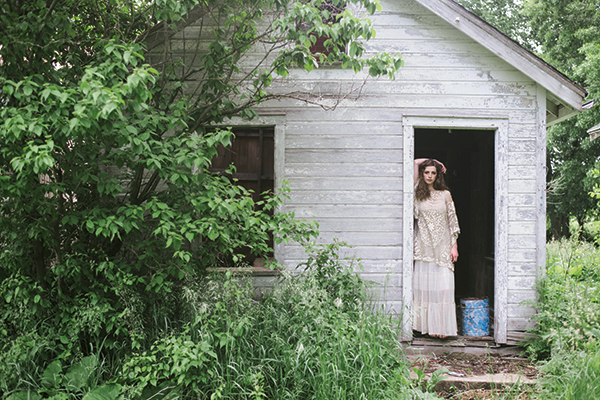Written by Zachary Mannheimer

Learning about, and tasting, grapes is a never-ending pursuit for wine lovers, as there are more than a million varietals, a number that keeps growing because of the continual development of hybrids. But your wine-drinking experience will become even more enjoyable if you explore—even if just from your armchair—the countries and regions where those grapes are grown.
The following are five of my favorite regions that produce reds. Except for Rioja in Spain, none of them are among the most famous winemaking regions in their country, but rather are often overlooked, or, in some cases, unknown. But each of these regions produces incredibly affordable wines that drink like their more expensive cousins. I am constantly seeking new producers and varietals from these far-flung places, and I hope this encourages you to do so as well.
1.Willamette Valley, Oregon
I’m an Old World guy. Give me Europe, not America, when it comes to what’s in my glass. I shrug off the celebrated cabernets and merlots of America, not because they aren’t good, but because I find they lack distinction. Even when it comes to pinot noir, I prefer ones from Burgundy or even northern Italy. However, there is no wine as unique to a region as pinot noir is to the Willamette Valley.
Once you pour a glass, the perfect violet and sweet plum notes, with traces of black pepper and vanilla, hit your nose immediately. The fact that the region is situated north of the San Francisco fog and south of areas with consistent freezing temperatures makes it ideal for pinot production and gives the wine’s flavor profile a punch you won’t find in any other region.
Spring and fall are my favorite times of year for Willamette pinot. The slight chill in the evening air during both seasons brings about a restlessness that sinks into satisfaction when your glass hits your lips. It’s the perfect bottle of American wine.
2. Colchagua Valley, Chile
Chile is a geographical treasure because of its proximity to the ocean to the west and the Andes to the east. The wind pulls the seawater onto the land and across the centrally located Colchagua Valley. When the wind smashes into the mountains, the sea spray drifts over the grapes below. It’s the perfect climate for a carménère grape.
Carménère was originally a Bordeaux grape. About 80 or so years ago, carménère began to lose favor in France and was taken to South America, where it began to thrive (a similar tale can be told about malbec).
The beauty of carménère is twofold: It has deep, luscious character due to the terroir of the Colchagua Valley, and it has a ridiculously affordable price. A carménère reserve from Colchagua would compare very favorably to many mid-tier Bordeaux wines.
3. Rioja, Spain
When asked my favorite region, I say Rioja. When asked what a Rioja Gran Reserva smells like, I say, “It smells like wine.” Rioja offers, I believe, the most pure flavor of any region on the planet. To know why takes knowing a bit of wine history. Indulge me.
A louse called phylloxera came to France on American boats in the mid-19th century and feasted on Bordeaux vineyards, destroying acres of the world’s most famous vines. So Bordeaux’s finest winemakers left town and moved farther south, where the climate was too warm for the louse to survive. They found Rioja and spent nearly two decades teaching Spanish vintners their tricks. Then grafting vines was invented, and the French went back home. The Spanish vintners were left with some of the best rocky soil on the planet to grow vines as well as the winemaking skills the French had taught them.
So you’ve got the finest soil mixed with the best winemakers. How can you go wrong?
4. Apulia, Italy
I found my first love in the heel of the Italian boot. The simple reason is that I worked in an Italian restaurant at the time and southern Italian wines are inexpensive. The more complex reason is that these reds have such a distinct nose; immediately when you open the bottle, the aroma floats up and hits you. Cinnamon, clove, garden soil and an odd powder aroma are consistent from the reds of Apulia. Their flavor is always smoky, slightly tart and long in finish. The grape negroamaro is responsible for this deep flavor, often found alone and sometimes joined by malvasia nera or primitivo.
Most of these wines drink like expensive bottles but sell for under $15. Wine is usually expensive only if it is rare or marketed well. Apulia makes more wine than any other Italian region, so few, if any, of its bottles are rare, and Copertino, Salice, Salentino and Salento (all towns and consequently wines) aren’t widely marketed. What’s more, Apulian wines age very well, and it’s rare to find
age-worthy bottles in this price range.
5. Peloponnese, Greece
Before we begin, let’s remember that the Greeks invented wine. Now, dismiss all the notions you have of Greek wine and get on board.
Peloponnese is the southernmost region of the Greek mainland. The main red grape is called agiorgitiko. First, it’s fun to say (ah-zheor-GEE-tee-koh). Second, if you think you like pinot noir, you’ve never tasted agiorgitiko.
Wine has been made here since the dawn of drinking, and the biggest factor that gives a bottle depth is the age of the vines and soil. And they don’t get much older than this. What’s more, Peloponnese offers the best climate for wine grapes to thrive—hot days and cool nights. Little rain also makes for stronger vines as they have to struggle to find a water source on their own.
There’s not a large selection of Peloponnese wines in the Des Moines market, but I hope that will change soon once people understand the subtle power these ancient wines can have.









